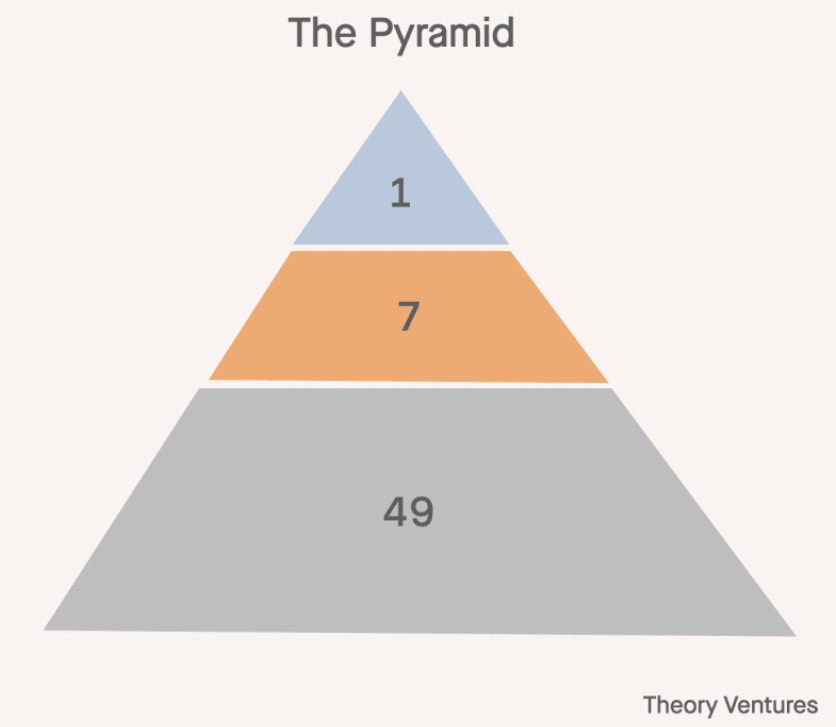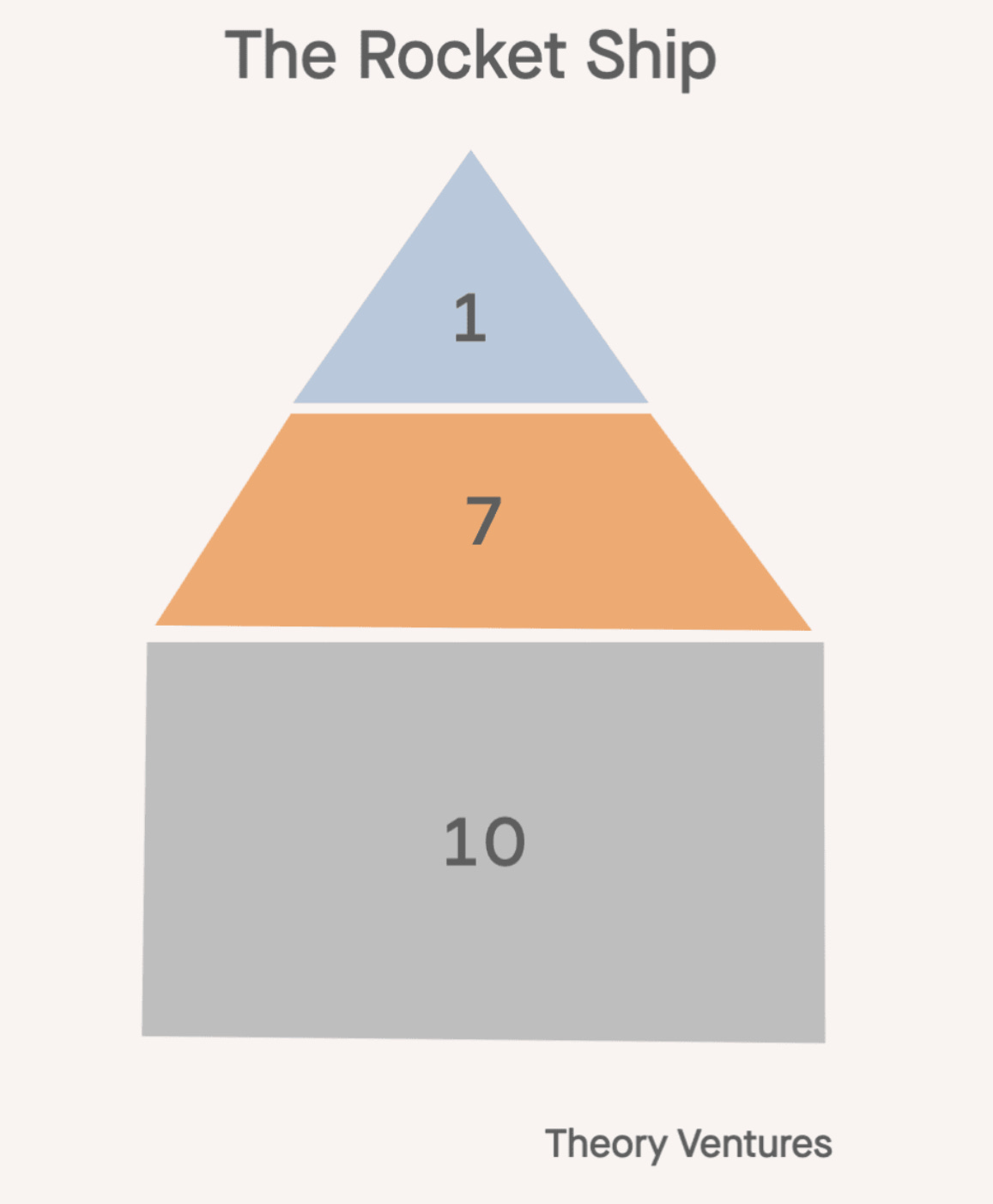The Post-AI Org Chart
The Org Chart Was Built for the Industrial Age
I’m experimenting with guest posts. If you have a well-written Substack publication, reach out to me and we can discuss cross-sharing our ideas.
Raffaela Rein is a seasoned board director and tech entrepreneur. She serves on boards for Porsche, Mutares, and IU Group, and founded BoardLens, an AI company helping boards and investors drive better performance through smarter governance.
The Org Chart Was Built for the Industrial Age
Guest post by Raffaela Rein, writer of The AI Leadership Edge — actionable AI insights for 10,000+ business leaders and board directors.
For more than a century, companies have been structured like pyramids. At the top sits the CEO, beneath them layers of managers, and at the base, hundreds or thousands of individual contributors.
This model worked beautifully in a world where coordination and oversight were the main constraints. Managers were needed to translate strategy into action, allocate resources, and ensure work was done on time and to standard.
But AI changes that equation entirely. Coordination costs fall to near zero. Cognitive work—once the exclusive domain of analysts, designers, and writers—can now be performed by AI agents. The traditional “pyramid” is starting to look like an outdated relic of the industrial era.
So what comes next?
Let’s explore two potential futures.
Model 1: The Short Pyramid
In this model, AI collapses the bottom layer of the organization.
Managers no longer oversee seven analysts or designers—they oversee seven AI agents. The ratio of “manager to individual contributor” shifts from 1:7:49 to 1:7. Each agent replaces a cluster of routine workstreams: reporting, summarizing, coding, designing, scheduling.
Headcount drops by roughly 85%, but the impact per human increases exponentially. The manager’s job evolves from assigning work to defining prompts, curating data, and ensuring quality control across intelligent systems. Human roles shift upward—to creativity, judgment, and cross-functional orchestration.
It’s not a dystopia; it’s a redesign. Just as industrial machinery didn’t eliminate factories but changed what factory workers did, AI will transform what “managing” means.
Model 2: The Rocket Ship 🚀
If the short pyramid is about compression, the “rocket ship” is about propulsion.
Here, every human manages both people and agents. The director has an AI chief of staff. Managers are player-coaches—executing strategy while teaching humans and agents to collaborate effectively. The structure still flattens (headcount drops about 53%, from 1:7:49 to 1:7:14), but the energy shifts toward speed and adaptability.
This model fits fast-moving organizations—tech companies, startups, and innovation teams—where experimentation matters more than scale efficiency.
It’s less about “reducing headcount” and more about maximizing velocity. Teams can pivot faster, learn faster, and deliver faster because they’re not bogged down by manual workflows.
One Company, Many Org Charts
The biggest misconception about AI transformation is that every function will change equally. They won’t.
Sales and relationships will stay human-led. Empathy, trust, and negotiation can be AI-assisted—but rarely automated.
R&D and engineering, on the other hand, are already becoming short pyramids. AI now generates 50–80% of new code in leading organizations. One skilled developer can oversee multiple AI “junior coders,” accelerating product velocity without scaling headcount.
Customer success and operations will likely evolve into hybrids: AI handles routine inquiries, forecasts churn, and drafts playbooks, while humans focus on strategic accounts and exceptions. The middle management layer doesn’t disappear—it transforms into “AI operations managers.”
The Leadership Challenge: Managing the Machines
This shift changes what it means to lead.
Today’s managers are taught to coach people, delegate tasks, and develop teams. Tomorrow’s leaders must also architect systems—understanding data flows, feedback loops, and AI limitations.
Instead of hiring and onboarding humans, they’ll configure AI agents, tune workflows, and integrate feedback signals. A manager’s leverage will come from how well they choreograph human-AI collaboration, not how many people report to them.
The “soft skills” remain essential, but their focus changes:
Empathy moves from individuals to interfaces—designing interactions that keep humans in control and aligned with AI outputs.
Communication shifts from “managing up” to explaining across—ensuring transparency between human and AI reasoning.
Judgment becomes the ultimate differentiator—the ability to decide when to trust automation and when to intervene.
In other words: is your org chart future-proof?
Because if the company really does “ship its org chart,” as Conway’s Law suggests, the design of your team will soon determine your competitiveness more than your product.
A Practical First Step
If you’re a business leader or board director, start small.
Pick one function—finance, operations, marketing—and map the current workflow. Identify where humans are performing repetitive, rules-based tasks. Then ask: could this step be handled by an AI agent?
Don’t think of it as automation. Think of it as elevation. Every task AI takes over is an opportunity to move your people up the value chain—closer to judgment, creativity, and strategic influence.
Reimagine job descriptions as systems of collaboration, not static roles. Reimagine managers as conductors of intelligence, not coordinators of labor.
And reimagine the org chart not as a pyramid, but as a living network—flexible, adaptive, and constantly learning.
Thanks for reading. Join over 10.000 business leaders and board directors and receive actionable insights by subscribing to the The AI Leadership Edge





